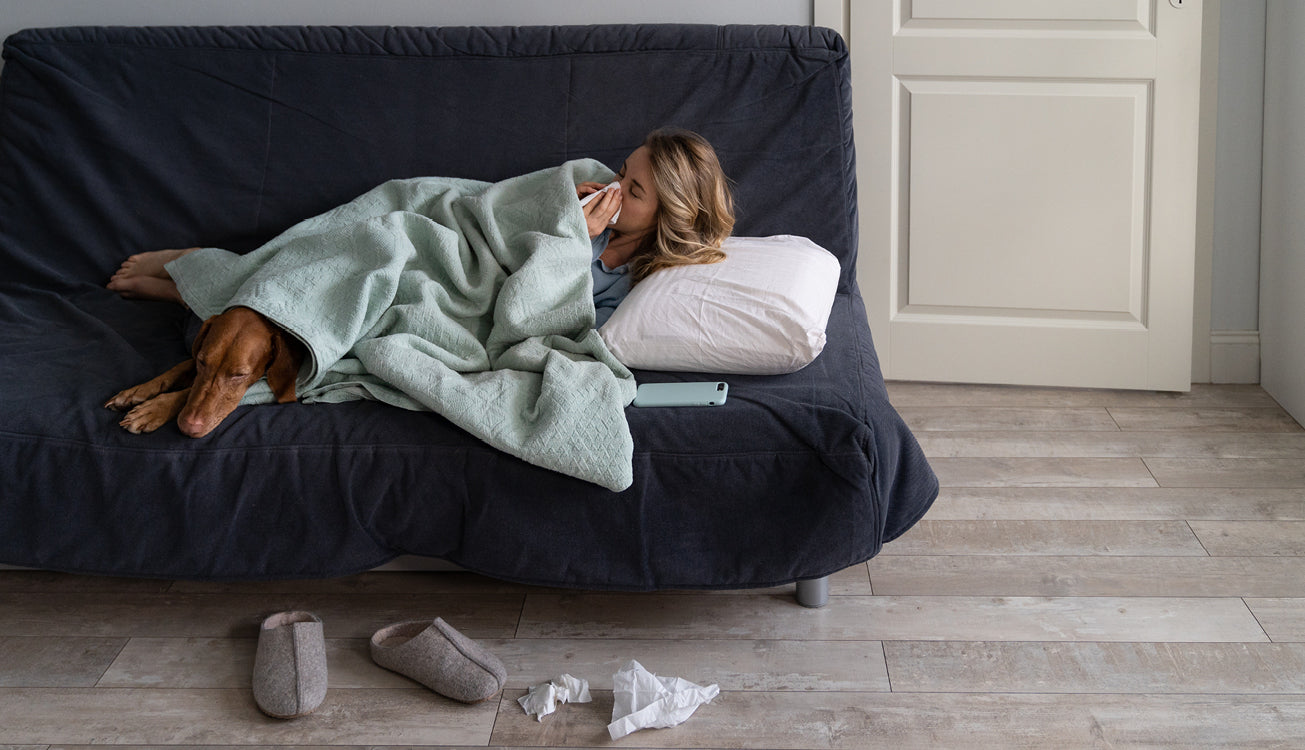
How To Manage Fall Allergy Symptoms
What happens in the Spring, stays in the Spring – except for allergies. Spring isn’t the only season that brings sniffles. Fall Allergy Season has begun and research says that 50 million Americans suffer from allergies each year!
Fall can be a bothersome season for many people who are sensitive to seasonal elements such as mold and ragweed pollen. As the excitement of the arrival of autumn activities is around the corner, don’t let fall allergies ruin the season. To read more about the causes and triggers of fall allergies that come with the change of weather, check out our previous blog post on fall allergy triggers.
Fall Allergy Symptoms
Allergy symptoms can vary depending on which part of the body is exposed to allergy triggers. To help survive the fall allergy season, we’ve compiled a list of common symptoms and tips on relief to help manage them so you can continue to enjoy the outdoors as the leaves begin to change.
- Mouth: Dry throat, coughing
- Nose: Sneezing, runny nose, nasal congestion
- Eyes: Irritated, watery, itchy
- Lungs: Wheezing, asthma
- Skin: Dry, itchy, hives, eczema
Learning how to identify the triggers and symptoms of fall allergies can better help in managing them to provide relief and comfort. Here are some tips on ways you can reduce symptoms!
5 Tips for Fall Allergy Relief
Check Pollen Levels
If you are sensitive to pollen, check the pollen levels in your area by clicking here. If the local pollen levels are high, minimize the amount of time you spend outdoors to avoid constant exposure to allergens.
Use Air Conditioning
This is ideal for keeping moisture out of the air. Closing the windows throughout the home will decrease the number of allergens and pollen that can enter your house. Purchasing an AC unit that is appropriate for your home is a great way to keep healthy this season!
Use Protection Against Pollen
To keep pollen off of your skin and body, wear protective clothing such as long sleeves and full pants when leaving the house. Wearing sunglasses and a hat can also provide protection for your eyes and hair. When raking fall leaves from the ground, wear a mask to protect your nose from allergens. After spending time outside, wash your skin, face, and hair as soon as possible to remove lingering pollen that might cause irritation.
Get a Dehumidifier
Dehumidifiers can provide relief to allergy symptoms by clearing your nasal passage and making it more comfortable to breathe. Using a dehumidifier to keep humidity levels in your home low can help fight dust and mold growth in the house. Check out our range of dehumidifiers that are ideal for your space!
Heater Filter
If you are able to choose the filter for your heating system, choose a HEPA filter. These filters are designed to help remove pollen, mold, and other particles from the air.
